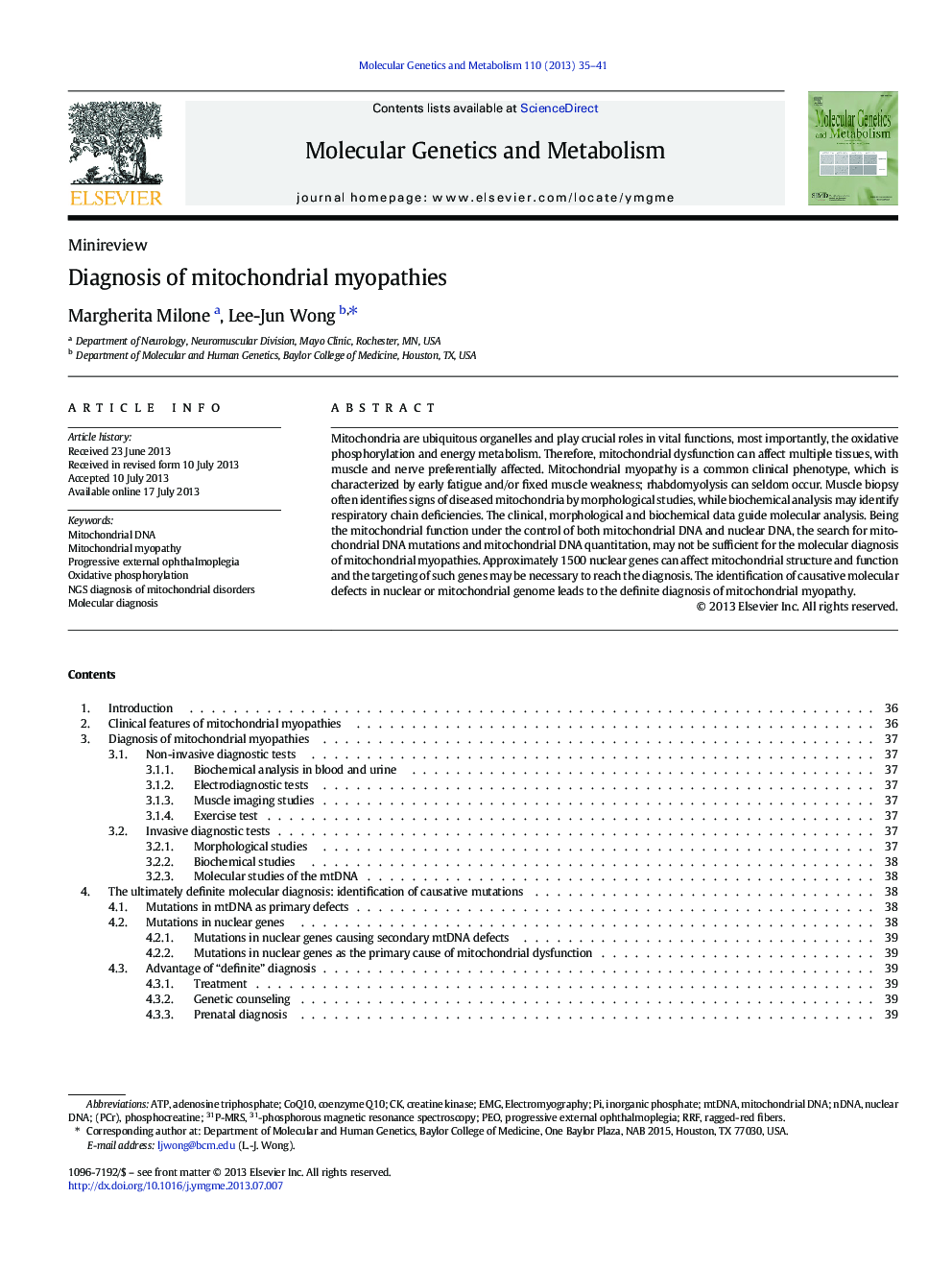| Article ID | Journal | Published Year | Pages | File Type |
|---|---|---|---|---|
| 8343969 | Molecular Genetics and Metabolism | 2013 | 7 Pages |
Abstract
Mitochondria are ubiquitous organelles and play crucial roles in vital functions, most importantly, the oxidative phosphorylation and energy metabolism. Therefore, mitochondrial dysfunction can affect multiple tissues, with muscle and nerve preferentially affected. Mitochondrial myopathy is a common clinical phenotype, which is characterized by early fatigue and/or fixed muscle weakness; rhabdomyolysis can seldom occur. Muscle biopsy often identifies signs of diseased mitochondria by morphological studies, while biochemical analysis may identify respiratory chain deficiencies. The clinical, morphological and biochemical data guide molecular analysis. Being the mitochondrial function under the control of both mitochondrial DNA and nuclear DNA, the search for mitochondrial DNA mutations and mitochondrial DNA quantitation, may not be sufficient for the molecular diagnosis of mitochondrial myopathies. Approximately 1500 nuclear genes can affect mitochondrial structure and function and the targeting of such genes may be necessary to reach the diagnosis. The identification of causative molecular defects in nuclear or mitochondrial genome leads to the definite diagnosis of mitochondrial myopathy.
Keywords
Related Topics
Life Sciences
Biochemistry, Genetics and Molecular Biology
Biochemistry
Authors
Margherita Milone, Lee-Jun Wong,
